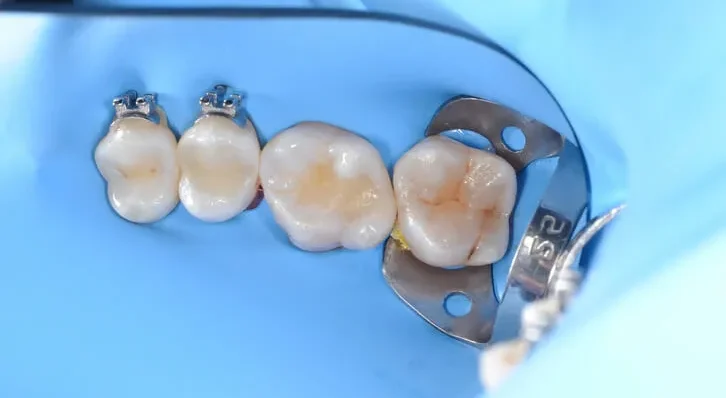Authors:
Ernesto Borgia, Rosario Baron, Jose Luis Borgia
Purpose
The primary objective of this study was to evaluate the long-term clinical success of direct light-activated composite resin restorations in posterior teeth, focusing on the quality of the margins and occlusal surfaces. The study also aimed to assess the survival of these restorations based on their size and location, while comparing the clinical performance of different composite resin formulations over a period of 5 to 20 years.
Materials and Methods
This retrospective study included a variety of composite resins supplied by different manufacturers, all of which were placed in posterior teeth under rubber dam isolation by the first author. The restorations were selected based on specific inclusion criteria: they had to have been functional for at least 5 years and placed between October 1993 and October 2008. Additionally, the patients had to have been treated continuously by the first author for a minimum of 7 years and still be attending the practice as of 2013. Patients with removable dental prostheses, those with disabilities, those who had moved away, or those who had passed away were excluded from the study.
From the pool of 210 eligible patients who met these criteria, a sample of 138 was randomly selected for clinical examination between November 2013 and April 2014. Within this group, 61 patients were found to have a total of 105 direct light-activated composite resin restorations that fit the study’s inclusion criteria. Twenty-nine of these patients (47.5%) had undergone regular annual maintenance therapy, which was documented as part of the study’s evaluation process.
The clinical data collected included a range of variables: patient age and gender, the duration of their clinical attendance, specifics of the tooth preparation, the location and size of the restorations, and the quality and longevity of the restorations. Additionally, the type of restorative materials and adhesive systems used, as well as the presence of parafunctional habits, secondary caries, and adherence to maintenance therapy, were recorded. These data points were systematically entered into a specially designed form for comprehensive analysis.
To ensure the accuracy and objectivity of the clinical evaluations, the authors were blinded to the patient data during the assessments. The quality of the margins and occlusal surfaces of the restorations was evaluated, and the inter-rater reliability was measured using Cohen’s Kappa coefficient, which ranged from 0.78 to 1, indicating substantial to almost perfect agreement.
For statistical analysis, the data were processed using Epidat software, version 3.1, developed by the Consellería de Sanidade de la Xunta de Galicia with support from PAHO-WHO, alongside SPSS software, version 13.0. Given the small number of complete datasets available, the study employed non-parametric statistical tests to identify significant differences. These tests included Fisher’s exact test, the Chi-square test, the Kruskal-Wallis test, and the Mann-Whitney U test. The study also intended to use Kaplan-Meier survival analysis but was unable to do so due to the insufficient quantity of complete data.
Results
At the time of the clinical evaluations, a remarkable 103 restorations (98%) were still functional, with 98 of them (95.1%) rated as clinically successful based on the predefined criteria. This indicates a very low failure rate, with only two restorations (2%) failing over the study period. The mean survival time for the restorations that remained functional was calculated to be 11 years and 7 months, demonstrating the long-term durability of these composite resin restorations in posterior teeth.
Conclusions
The findings of this study underscore the high clinical success rate and long-term viability of direct light-activated composite resin restorations when used in posterior teeth. Over a span of up to 20 years, these restorations not only maintained their functionality but also exhibited a low incidence of failure, making them a highly reliable option for dental restorations in medium to large cavities in posterior teeth.
These results suggest that direct light-activated composite resins are an excellent material choice for posterior restorations, offering durability and aesthetic quality over extended periods. The study provides strong evidence supporting the use of these materials for a wide range of posterior restorations, including medium, extended, and, in some cases, large preparations. The success of these restorations also highlights the importance of proper technique and regular maintenance in achieving long-term outcomes in dental practice.
Source: Pubmed

